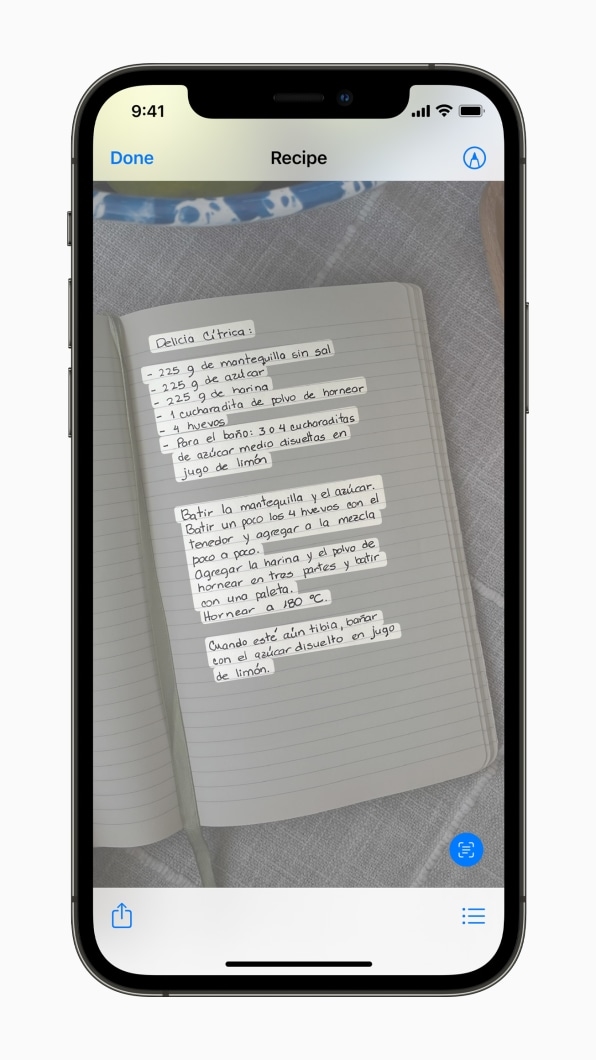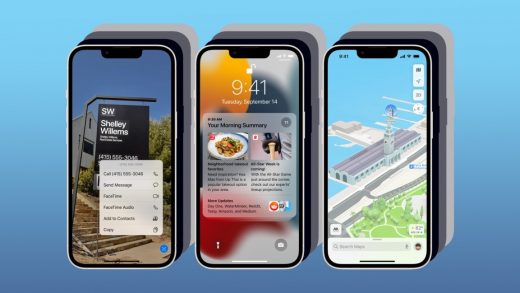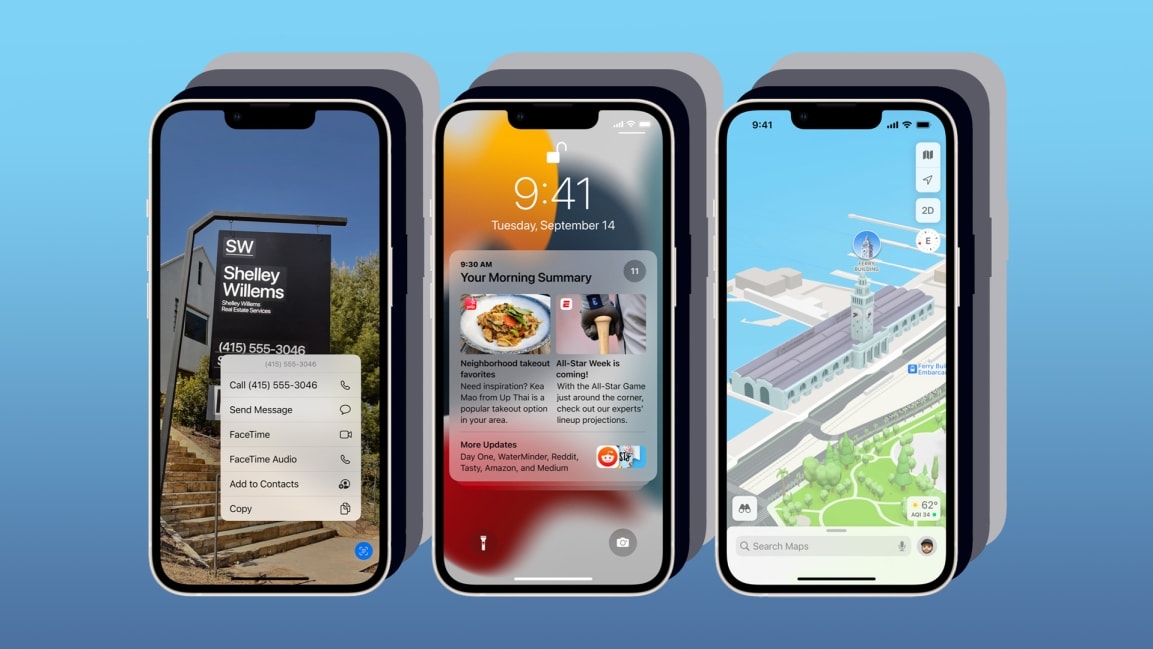Some of iOS 15’s best features are borrowed from Google and Zoom
Many of the new features in Apple’s new iOS 15 mobile operating system, which launched this week, appear to be closely based on the look and feel of features already launched on other tech platforms.
This kind of imitation is nothing strange in the tech industry. In fact, Apple is known for being a “fast follower”: The company often isn’t the first to market with a given feature or product but is happy to jump in later with its own version of the feature or product, after it’s clear that consumers want it. Often Apple’s version proves superior and ends up gobbling up market share, like it did with the iPad. And to be fair, Apple’s design and features have also inspired other phone makers.
But it’s one thing for Apple to come to market with a unique version of an already popular thing, and quite another to bring a version that looks an awful lot like what’s already out there—and that’s the case with iOS 15.
AR in Maps
The most striking example is the AR function iOS 15 brings to Maps. In 2019, Google began testing a feature that allowed you to hold up your phone to the world, then see graphics that would direct you where to go, superimposed on the image on your phone’s screen. Google called it, Google Maps AR or Live View.

Now, Apple has extended Apple Maps to do the exact same thing. Apple says users can hold up their iPhone and Maps will generate accurate and detailed walking directions in AR. It looks very similar to the Google app to me. It even uses the same little “cube” icon in the button to turn the AR on.

FaceTime gets Zoomy
In iOS 15, Apple made its FaceTime video conferencing app look and act much more like the dominant video conferencing app in the market, Zoom. Now FaceTime can support up to 32 people on a call, not counting the user who initiated it.
To better manage higher numbers of participants in a small space, Apple took cues from Zoom and added a new grid view, stacking up users on the screen Brady Bunch-style—just like Zoom’s gallery view. In FaceTime, the image of the person talking now enlarges a bit, and you see a border around their picture. The design is reminiscent of the Zoom mobile app’s default Active Speaker mode, in which the app detects who’s talking and makes that person’s face larger than the others on the screen.
In iOS 15, Apple says it’s using the technology behind the iPhone camera’s popular Portrait Mode to blur the background and make the user’s face stand out in FaceTime. Zoom added a blurred background feature to its app in March, and Microsoft Teams beat both companies to offering such a feature.
Co-watching
One of the most significant additions in iOS is the new SharePlay feature in FaceTime, which allows pairs or groups of people to watch video streams or listen to streamed music in real time via iPhones, iPads, Macs, or Apple TV. SharePlay may be inspired, in part, by the “watch party” features that streaming platforms, such as Hulu, Amazon Prime Video, and Disney+, have begun adding to their services over the past year or so.
But as Catie Keck at The Verge points out, Apple’s addition to the feature is probably not about competing against Hulu or Netflix, so much as it is about keeping pace with Facebook Messenger and Instagram, which already offer ways for users to video chat while watching various media together.
SharePlay isn’t quite ready yet; Apple says it’s coming later this fall. The company could be trying to nail down more content partners for the service, such as Netflix. Apple has a chance to beat Facebook and others at co-watching and co-listening on the strength of the content it can provide. It already has a huge music catalog with Apple Music, and a growing selection of video with TV+. But Apple may need to get more content owners to integrate with SharePlay to satisfy the diverse tastes of the people who may want to have a watch party.
Reading from photos
The Live Text in iOS 15 is another example of Apple slowly catching up to the competition. Live Text scans words either within your photos or within the camera app and converts them to text that can be copy-and-pasted into a message or email. This would enable you to take a picture of a handwritten recipe, extract the text, and paste it into a social media post.

Google added an optical character recognition feature to its Google Photos and camera apps back in 2019. The use case Google focused on most was the ability to take a picture of a complicated Wi-Fi password, instead of having to copy it down by hand and reenter it.
Apple released its new operating system on Monday, and it’ll come standard on the new line of iPhone 13s that will go on sale later this week.
(42)



